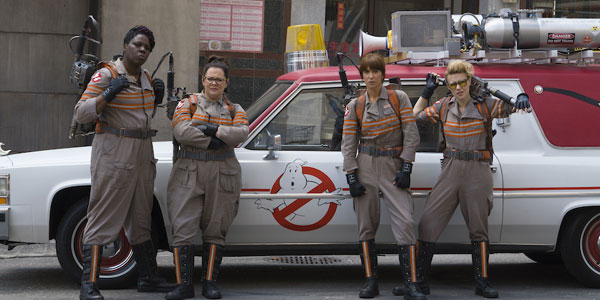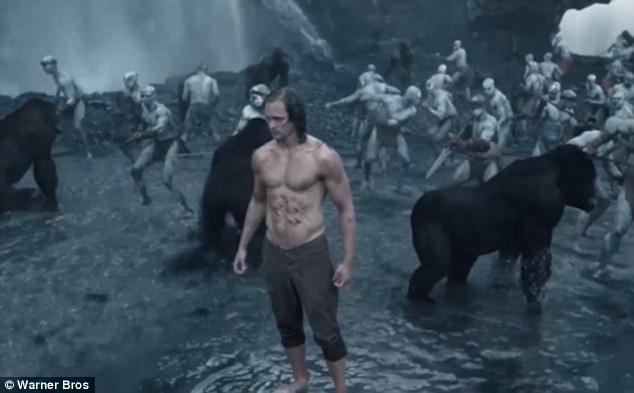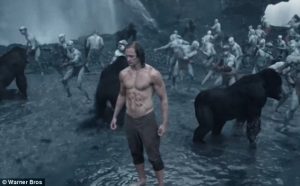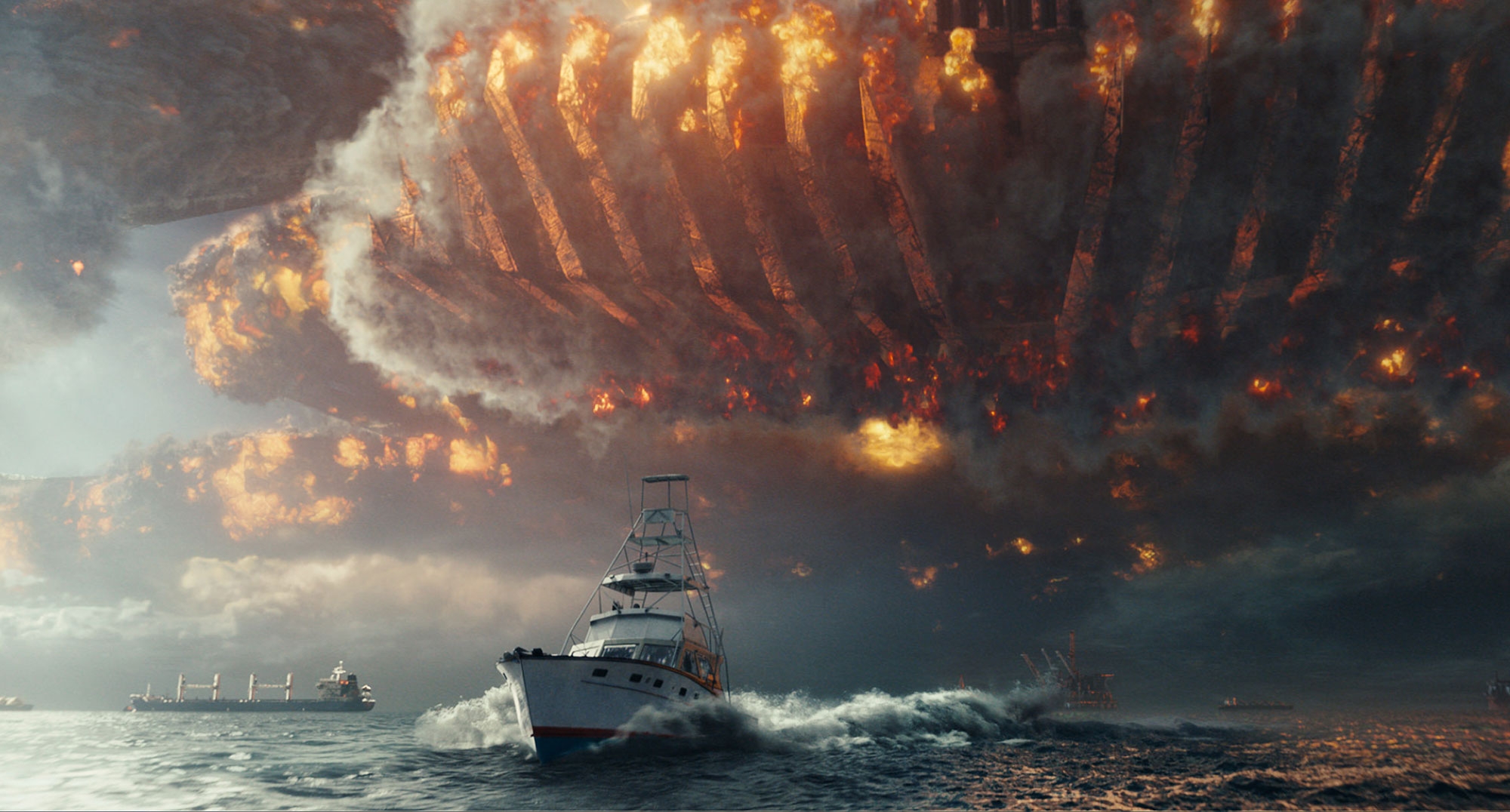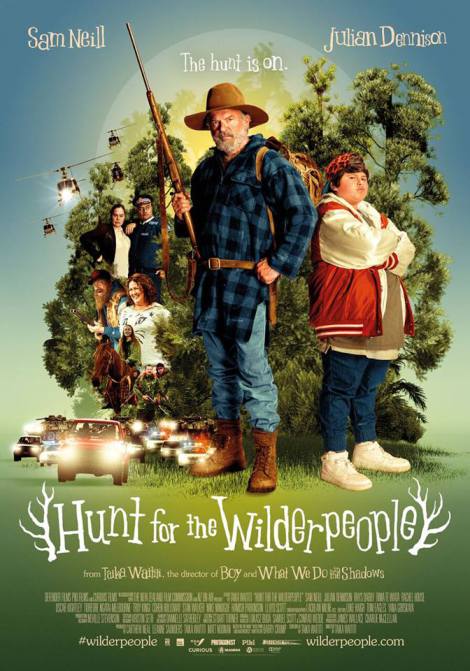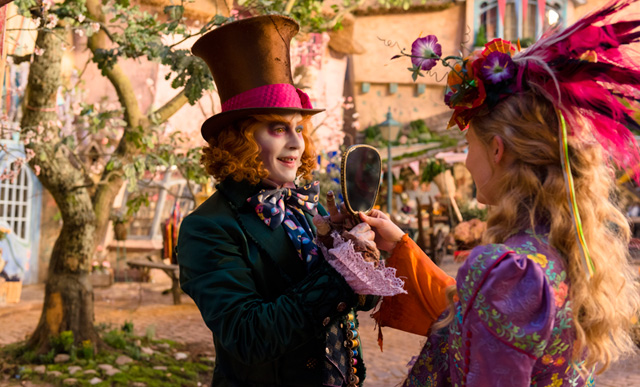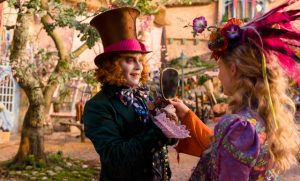Ghostbusters
Posted on July 14, 2016 at 5:20 pm
B+| Lowest Recommended Age: | Middle School |
| Profanity: | Mild language |
| Alcohol/ Drugs: | None |
| Violence/ Scariness: | Extended fantasy/paranormal violence with some disturbing images |
| Diversity Issues: | Diverse characters |
| Date Released to Theaters: | July 15, 2016 |
| Date Released to DVD: | October 10, 2016 |
| Amazon.com ASIN: | B01I2FFGW6 |

But it is very much its own take on the story, with a fresh script from director Paul Feig and Katie Dippold (“Parks and Recreation,” “The Heat”). There are tweaks on the original’s headquarters and car. And it has updated references — you know that if a New Yorker saw a ghost today, she’d whip out a selfie stick and Instagram it, and they pause for a burn on Reddit haters).
Like the original, it begins with scientists losing their jobs in academia because of their insistence on exploring the paranormal. Wiig plays Erin, a physicist who misses her chance at tenure when it is revealed that she once co-authored a book called Ghosts from Our Past — Both Literally and Figuratively. It was out of print, but the other author, her estranged friend Abby (McCarthy), has made it available on Amazon. Erin visits Abby’s lab and meets Jillian Holtzmann (McKinnon), a mad scientist type who literally plays with fire. When they are all fired, they start a company to investigate the paranormal and are soon joined by Patty (Jones), a subway worker who does not know much about science but has an extensive knowledge of New York city history. And they hire a receptionist named Kevin (“Thor’s” Chris Hemsworth) and get to work trying to capture a ghost so they can prove they are right.
Meanwhile, a nerdy guy is building a machine to unleash and intensify all of the spirits in the city, and so the women go from studying the ghosts to, yes, busting them, with a major confrontation in the midst of a metal concert with a group called “The Slimers” onstage and Ozzy Osbourne watching in the wings. The mayor (Andy Garcia) and his aide (Cecily Strong) thank the team privately but denounce them as frauds publicly to keep the city from panicking.
The final confrontation goes on a bit too long, which is probably why there is an obvious cut of what would have been a dance number (glimpsed in the credits and I hope added in full to the DVD extras). But the action scenes are strong and the comedy is first-rate, at its best achieving a deliriously loopy silliness that is refreshing in an era where gross-out, oh-no-they-didn’t jokes are considered wit.
Each of the four main characters is clearly having a blast showing what she does best, creating distinctive characters with very different styles but always working the chemistry between them with dialog that often feels improvised by actors trying to make each other laugh. It is refreshing to see a movie with four female leads who are professional, super-smart, and totally badass, kicking the butts of all the ghosts and demons and the Bechdel test as well. Their happily ever after is saving Manhattan not getting some guy to put a ring on it.
Newcomer-to the big screen McKinnon tears it up as a Doc Brown type with a wicked smile, a steampunk vibe, and a Faraday cage, swinging into a Glinda the Good Witch song and handing out weapons from a motion-activated proton glove to a Swiss army knife. “She’s doing a marvelous impression of a deflating balloon,” she says as one of her colleagues is being shot through the air. Jones, also in her first feature film lead role, is outstanding as Patty, who knows who she is and what she wants. McCarthy is adorable as always and has a lot of fun with a particular demon. And Hemsworth is flat-out hilarious as the incompetent Kevin. It’s funny, smart, and sweet and in every way as good or better than the original. Fanboys, have at it.
NOTE: Stay through the credits for glimpses of the excised dance scene and some other treats, and following the credits, a brief extra scene with some important information.
Parents should know that this film includes extended fantasy/horror peril and violence. Characters are killed (one off-screen, one suicide by electrocution), and there are some gruesome images and mild crude humor.
Family discussion: What’s your favorite ghost story? Which was the scariest ghost in the movie?
If you like this, try: the original “Ghostbusters,” “Monster House,” and “ParaNorman”

